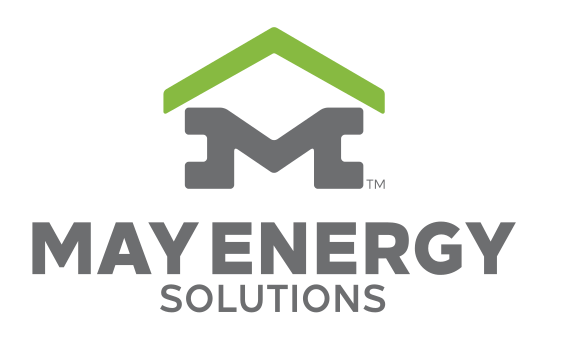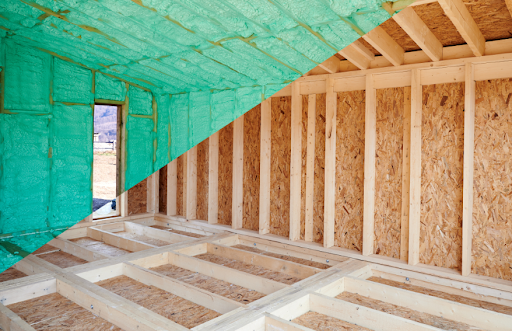When it comes to improving your home’s energy efficiency, insulation plays a critical role in regulating indoor temperatures and reducing energy costs. But not all insulation is created equal—its effectiveness is measured using a key metric called the R-value.
The R-value determines how well insulation resists heat flow, directly influencing how efficiently a home retains warmth in the winter and stays cool in the summer. A higher R-value means better insulation performance, leading to a more comfortable living environment and lower energy bills.
Whether you’re planning a renovation, building a new home, or simply looking to improve your home’s thermal efficiency, understanding R-values will help you make informed decisions. In this guide, we’ll break down what R-value means and why it matters the most.
How Does It Work?
Every material conducts heat at different rates. Some allow heat to pass through quickly, while others slow it down. The R-value is calculated using two factors:
- Thickness of the Material (m): Thicker insulation provides more resistance to heat flow, generally increasing the R-value.
- Thermal Conductivity (λ, W/mK): This measures how easily heat moves through the material. A lower thermal conductivity means better insulation because less heat is transferred.
The formula for calculating R-value is:
R-Value = Thickness (m) / Thermal conductivity (W/mK)
Example of How It Works
Think of insulation as a blanket for your house. The thicker and fluffier the blanket, the better it stops heat from escaping in winter or entering in summer.
Here’s how it works simply:
- If your insulation (like glass wool) is 6 in thick, it has an R-value of about 4.3. That’s like using a thicker, warmer blanket, which means it stops heat very effectively.
- If the same insulation is thinner (2 in thick), the R-value drops to about 1.4. That’s like using a thinner blanket, allowing more heat to escape or enter.
So, in short: a higher R-value means better insulation, keeping your home comfortable and saving energy.
Top Reasons Why R-Value Matters For Home Insulation
-
Energy Efficiency And HVAC Performance
R-value plays a pivotal role in optimizing energy efficiency by reducing the load on heating, ventilation, and air conditioning (HVAC) systems. When insulation effectively resists heat flow, indoor temperatures remain stable, requiring less energy to heat or cool the space. It enhances HVAC efficiency and improves seasonal performance, resulting in long-term energy savings and reduced carbon emissions. Insufficient R-value can lead to thermal leakage, where heated or cooled air escapes through the building envelope, forcing HVAC systems to work harder to maintain comfort levels. This increased workload translates to higher energy consumption, reduced equipment lifespan, and raised utility costs.
-
Building Codes And Compliance
In many regions, building codes mandate minimum R-value standards for insulation to ensure that homes meet energy efficiency and safety guidelines. These codes are typically based on climate zones, with colder areas requiring higher R-values to counteract heat loss. Non-compliance can lead to failed inspections, legal penalties, or additional construction costs to retrofit insufficient insulation. A knowledgeable house insulation contractor can help navigate these codes, ensuring that the insulation meets the required standards while optimizing energy efficiency. Moreover, R-value compliance supports a home’s eligibility for energy-efficient certifications, green building ratings, and government incentives or rebates.
-
Thermal Resistance
The R-value directly determines an insulation material’s capacity to resist heat flow, making it essential for adapting a home’s thermal performance to the local climate. In colder climates, materials with higher R-values slow down conductive heat loss, keeping indoor spaces warmer and reducing heat demand. Conversely, in hotter regions, insulation with an appropriate R-value reduces thermal gain by limiting the transfer of outdoor heat into the home. Understanding the heat flow mechanisms — conduction, convection, and radiation — helps homeowners select insulation that optimally balances resistance to these processes.
-
Moisture Control And Condensation Prevention
Proper insulation with the correct R-value acts as a barrier against moisture migration, reducing the risk of condensation inside walls, ceilings, and floors. In regions with significant temperature variations, warm indoor air can seep through the building envelope and encounter cooler surfaces, causing moisture to condense. Over time, this trapped moisture can lead to mold growth, wood rot, and structural damage. One crucial area to focus on is attic insulation, as inadequate insulation in the attic can lead to moisture buildup and ice dams during winter. Insulation with an adequate R-value helps maintain a stable temperature across surfaces, preventing dew point formation where moisture would otherwise accumulate. Also, using insulation with integrated vapor retarders or applying a combination of materials with varying R-values can further regulate moisture movement, ensuring a drier, healthier living environment.
-
Structural Protection
Temperature fluctuations cause building materials like wood, drywall, and concrete to expand and contract. Over time, repeated thermal cycling can lead to cracks, warping, and weakened structural elements. Insulation with the right R-value acts as a thermal buffer, stabilising internal temperatures and reducing the stress placed on building materials. Additionally, high-R-value insulation minimizes the risk of ice dams forming on roofs in colder climates, which can cause water intrusion and long-term damage. By maintaining consistent internal temperatures, proper insulation reduces thermal stress, ensuring long-term structural durability and protecting the building envelope.
-
Soundproofing Benefits
While the R-value measures thermal resistance, it indirectly affects sound transmission through its relationship with material density and composition. Insulation with a higher R-value is often denser, providing better acoustic dampening by absorbing and reducing sound waves. In multi-story homes or urban environments, this helps minimize noise from adjacent rooms, floors, or external sources like traffic. Materials such as mineral wool or cellulose, known for their high R-values, offer superior soundproofing by preventing airborne sound transmission and dampening impact noise. Strategically using insulation with varying R-values for interior and exterior walls allows homeowners to create a quieter, more peaceful living environment while still prioritizing thermal performance.
Wrapping Up
If you’re considering upgrading your insulation or building a new home, take the time to assess your region’s climate, your home’s specific needs, and the minimum R-value recommended by local building codes. To get started, consult a house insulation contractor near you, who can provide expert advice, assess your home’s energy performance, guide you on how to evaluate a home energy audit and recommend the best insulation type for your needs. This way, you can safeguard your home, enhance its value, and make a smart financial decision that pays off for years to come!

